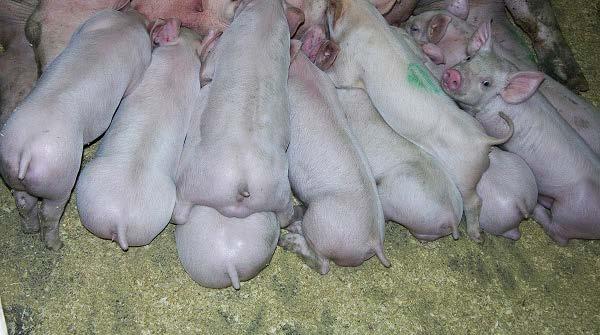
3 minute read
Pig production guide Part 8: The value of keeping detailed records
from ProAgri BNZ 15
by ProAgri
Farming is a business. No business can survive without good administration. Keeping detailed records of your pig farming business is essential to remain profitable, avoid losses and keep control of your farm. Luckily, there are many programmes available that will allow you to keep digital records of your pig farm. You will also be able to have a visual representation of your records by receiving automatic graphs that are drawn based on the data that you enter. Investing in one of these computer programmes will definitely regenerate the initial cost over time. Many types of records need to be kept on a pig farm. You need to stay updated with financial records, feed records, reproduction records of individual sows, and stock taking. Physical records should include the individual registration numbers of each pig for the stud farmer. Being organised is essential for timing insemination accurately. Use this information to develop your own records for effective service routines. Setting up and following an effective heat detection and service plan for your farm helps you to: • Detect the signs of heat accurately • Schedule insemination at the optimum times
This is essential for optimising breeding performance and achieving the best results. Review and adjust the routine periodically and develop an effective routine based on current best practice and information recorded on your farm.
Advertisement
Make sure you record this information for each female:
• Tag number (weaning to oestrus interval) • Date and time of proestrus • Date, time, and duration of oestrus • Date and time of first standing heat • Date and time of all inseminations • Projected and actual return dates • Any other observations
Include details such as:
• Number of days between weaning and oestrus • Oestrus duration • Variations in the number of days between weaning and oestrus, and oestrus duration • Seasonal changes (such as increased returns or more days to service) • Weaning day • Weaning to service interval for your breeding herd (day of the week your sows exhibit first standing heat) • Duration of heat Aug
Clear records and coloured marks make it easy to know what is happening with each female and what the next step needs to be. Use different coloured spray markers and/or the position, shape, or number of marks, to clearly show the status of each female. It is extremely important to keep everyone informed and to provide step manual can help everyone to follow the routine on the farm. Use record books to help ensure key information follows the routine on the farm. This will ensure that feed is ordered on time, heat observation and mating is done efficiently, and increase the number of litters annually. All the effort of keeping records will be useless if you do not use the information to improve the management practices on your pig farm. The farmer should review recorded information regularly to determine any trends for the farm or for individual females. In doing so, the farmer can determine whether his herd is generally a two or three day standing heat herd, and tailor the insemination routine accordingly. In order to ensure a balanced feed Cost per kilogram of porkers produced Cost per kilogram of baconers produced Cost per actual kilogram of lean meat produced Margin over feed cost

Below is an example of a monthly female breeding animals stock register as it appeared in the Pig Industry Handbook of 1997.
Month Number of sows Number of replacement gilts
Jan
Feb
Mar
Apr May Jun
Jul
training for relevant staff. A step-bySep Oct
Nov
Dec
Total Number of sows and replacement gilts that farrowed Total number of piglets born alive Number of litters weaned Number of piglets weaned
budget, certain aspects of feed record keeping require special attention. Feed conversion ratios, monetary costs and cost of gain must be calculated for each group of pigs. Feed costs should consider: • Cost per kilogram of weaners produced This table will allow you to keep track of the number of sows in the herd and how productive the sows are. If a sow does not produce enough piglets to meet the minimum average, she can be identified and culled. This will minimise feed wastage on unproductive individuals.
NoseRing® NoseRing® Wean with ease | No stress |• Wean with ease Next to the mother • No stress • Next to the mother
Whole Concepts cc
PO Box 1806, Vryburg,8600, South Africa Tel: +27 (0)53 927 4999 Tel: +27 (0)53 927 4999 Cell: +27 (0)82 459 9451 Cell: +27 (0)82 459 9451 judy@nosering.co.za E-mail: judy@nosering.co.za www.nosering.co.zawww.nosering.co.za PO Box 1806, Vryburg, 8600, South Africa










